#classic maya
Explore tagged Tumblr posts
Note
You post about Mayan glyphs sometimes & seem to be familiar with them. How do you study them? I've read information here & there online & I've read Coe's Deciphering the Maya Glyphs, but I really don't know of many resources.
There are a LOT of resources online for Classical Maya, which is great! But it can be hard to sift through all that information, much of it unpredictably getting updated and superseded.
-
My favourite dictionary is probably Harri Kettunen and Christophe Helmke's Introduction to Maya Hieroglyphs. (That's a direct link to the PDF. A link to the download page in HERE. The version I was using was the 14th edition. Apparently we're up to the 19th this year, so I've updated my files.)
If you want a slightly bigger dictionary, The Updated Preliminary Classic Maya‐English, English‐Classic Maya Vocabulary of Hieroglyphic Readings, by Erik Boot, is EXCELLENT. (That's a link to the academia dot edu page.) ¹
The first only has a limited number of images of the glyphs, and the second has none at all, but they're essential for figuring out how words are spelled, and what glyphs actually exist, so you know what to look up later. The first one also gives you an intro into grammar, and is just an all around good read.
-
Actual guides to glyphs ...
The Introduction to Maya Hieroglyph above is great for syllabics and some common words.
Beginners Visual Catalog of Maya Hieroglyphics, by Alexandre Tokovinine IS a really good guide for beginners. The images are stylized in ways that don't match most actual writing, but they're clearly depicted, and the sounds associated with them are a lot more accurate than older resources.
I still use John Montgomery's online Dictionary of Maya Hieroglyphs to check for logograms that I can't easily find elsewhere. It's a LITTLE out of date, but solid.
Truthfully, though? I often need to find academic articles on individual glyphs. I'll know they exist, because one of my dictionaries will spell that word with ALL CAPS, to indicate a logogram, but actually finding out what it looks like can be a pain. I have a bunch of articles saved onto my computer, in separate folders for animals, food/plants, and everything else.
-
Glyph Dwellers is a great site for articles and recent research. You have to take what they give you, but it's always interesting!
Wayeb, Mesoweb, and FAMSI all have a lot of good resources.
Academia dot edu and other online sites are also good, once you learn how to recognize the cranks.
-
There's also a lot of finding images of various artifacts with translations. Wayeb, Mesoweb, and FAMSI all have large databases of drawings and photos that you can browse to get an idea of what the script looked like in use.
The Maya Vase Database is amazing! The Classic Maya LOVED writing on their dishes and containers! It also has downloads of all the codexes (books) that survived.
-
Hope this helps a little! But really, try out Harri Kettunen and Christophe Helmke's Introduction to Maya Hieroglyphs before anything else! It's good.
-
¹ Mr. Boot disagreed with other linguists about quite a few subtle facets of translation. Both sides had very compelling arguments, and it's often visible in different readings across dictionaries.
40 notes
·
View notes
Text
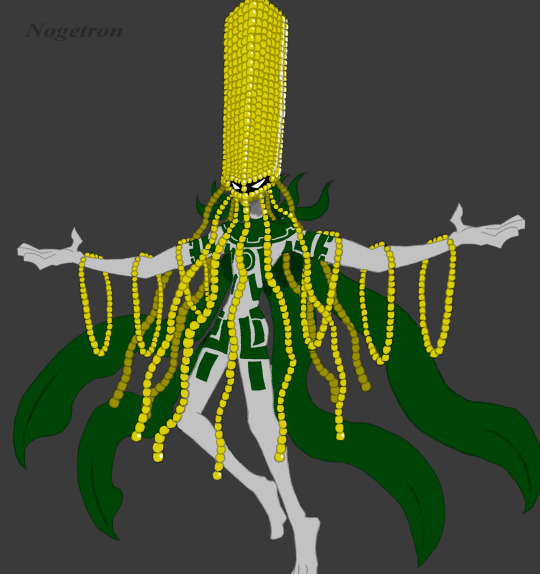
Hun-Ixim, the great sustainer of mesoamerica. Dubbed the “Maise god” by scholars, Hun-Ixim was a ubiquitous figure in mesoamerica, though mainly localized in the Maya peoples. The Kʼicheʼ Mayans told of Hun-Ixim’s grand participation in creation. Known to them as Hun-Hunahpu, he was tricked by the spirits of Xibalba and was slain. However his sons, the hero twins Hunahpu and Xbalanque challenged the lords of Xibalba to a ball game for revenge for their father. The two were able to beat the spirits of Xibalba and resurrect their father as the Maize god. After his resurrection Hun-Hunahpu helped the Kʼicheʼs creator god Q’uq’umatz create humanity by using corn dough to sculpt them. However it was among the classic and pre-classic Maya where Hun-Ixim truly reached his apex. Though strewn across wordless art and cryptic messages, Hun-Ixim’s role can be reconstructed. Before any world was created, the first father, Hun-Ixim lay afloat on the primeval sea. During this timeless age the sky and sea lay on top of one another as a single form. That was until Hun-Ixim created three stones with which he used as a hearth and raised the sky away from the sea. Next the god raised the great world tree, its roots creating the underworld as its trunk reached into the sky. Using this tree Hun-Ixim climbed into the sky and built his home upon the apex of the heavens. From his home the god caused time to start, dictating the stars to move across the sky. When a world cycle comes to an end and the universe dies, Hun-Ixim calls upon the other gods to gather the three hearth stones once more. The Jaguar and Stingray paddlers find the Jaguar throne stone, the Black-house red god finds the snake throne stone, and Itzamná finds the shark throne stone. Each of them set the stones at the edges of the world, causing the universe to begin anew.
In mesoamerica, maize or corn was a vital crop for the indigenous peoples. With Maize making up a vast majority of the diet of these peoples, it became an integral part of their culture, exemplified by Hun-Ixim the. maize god. The maize god represented civilization and prosperity, being considered the god of scribes and artists as well. A consistent theme of the Maize god is his rebirth through a turtle shell, in the older Mayan practices this could’ve been seen as Hun-Ixim being reborn with the creation of a new world. Originally the inscription that detailed the three stones of creation only referred to the overseer as the ‘Six Sky Lord’, however later researchers would reconstruct the cosmogony and were able to place the Maize god as the Six Sky Lord. The Itzamna mentioned in the three stones creation myth was the chief god and primordial creator of the Yucatec Maya. Itzamna shares many aspects with the Maize god, such as his role as a creator god, their connection with scribes and artists, the turtle motif, and both of them being associated with maize. Their connection is further reinforced by the Yucatec themselves, as they often depicted the Maize god alongside Itzamna, despite his relative absence in their myths. Because of this it could be possible that Itzamna could’ve evolved from the worship of Hun-Ixim, but at the very least both gods were conflated with one another, with Hun-Ixim likely being a representation of a younger Itzamna by the Yucatec. The Maize god himself is one of the oldest gods among the mayans and even mesoamerica itself, originating in the Olmec culture predating the Mayan civilization. With the only surviving record of the Olmec religion being their wordless art, it’s impossible to reconstruct anything of significance of the mythos. At most it’s believed that the Mayan mythos likely descended from Olmec mythology, so it is possible that Hun-Ixim held a creator role like he did among the Maya but it’s impossible to know for now. The later Aztecs also held descendants of the Maize god as well, like Centeotl and Xipe Totec, despite his influence diminishing the Maize god still held great importance to their mythology. The name of the Maize god is an incredibly complicated subject, the name I chose, Hun-Ixim “Maize Grain”, is a relatively new name posited by researchers. The name Hun Hunahpu appears in the Ki’che’ Popol Vuh, other names like Uac Chuaac Nal “Six Tall New Corn” and Zac Uac Nal “White Six New Corn” appear in the Chilam Bilam. The Maize god’s epithet of ‘first father’ is used frequently as well.
#art#character design#mythology#deity#culture hero#mayan mythology#maya#ki’che’#yucatec#yucatán#mesoamerican mythology#mesoamerica#maize god#hun-ixim#first father#hun-nal-ye#corn god#creator god#supreme god#plant god#pre-classic maya#classic maya#post-classic maya#indigenous#mystery god#six sky lord#sky god#olmec mythology#olmec
4 notes
·
View notes
Text


Marya Hornbacher // Maya Angelou
11K notes
·
View notes
Text
obligatory christmas doodle with some mention of the nutcracker by klavier :)



#ace attorney#myart#aa classical musicians au#apollo justice#athena cykes#phoenix wright#miles edgeworth#ema skye#trucy wright#franziska von karma#maya fey#mia fey#pearl fey#klavier is the resident tchaikovsky enjoyer to the detriment of the rest of the orchestra
209 notes
·
View notes
Text
There is no greater agony than bearing an untold story inside you.
- Maya Angelou, I Know Why the Caged Bird Sings
#quotes#books#literature#lit#classics#academia#light academia#dark academia#chaotic academia#book#book quotes#quotation#Maya Angelou#Memoir#Nonfiction#Biography#Autobiography#I Know Why the Caged Bird Sings
886 notes
·
View notes
Text


Singin' and Swingin' and Gettin' Merry Like Christmas Maya Angelou
#Singin' and Swingin' and Gettin' Merry Like Christmas#maya angelou#literature#paperback#books#classics
180 notes
·
View notes
Text
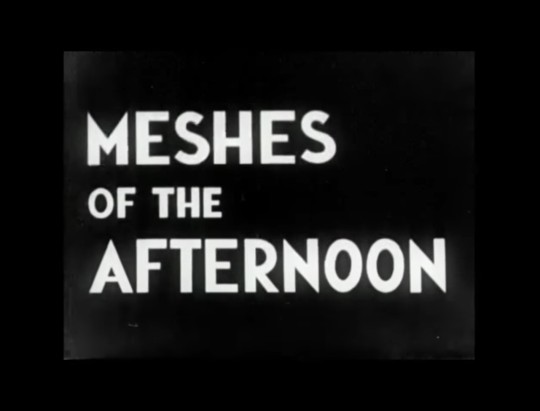

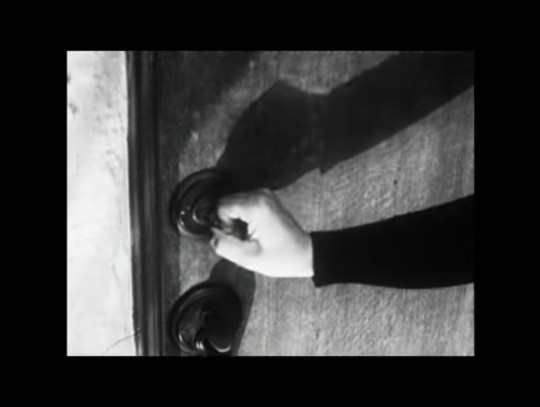


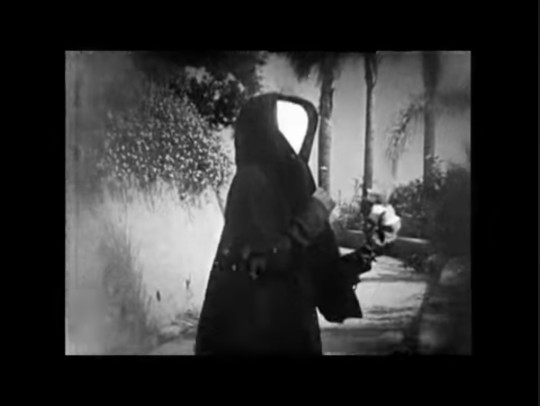


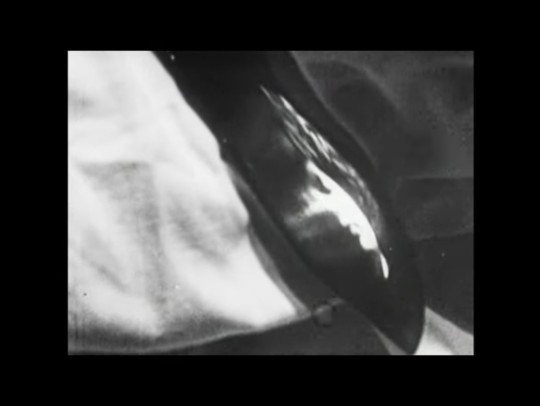

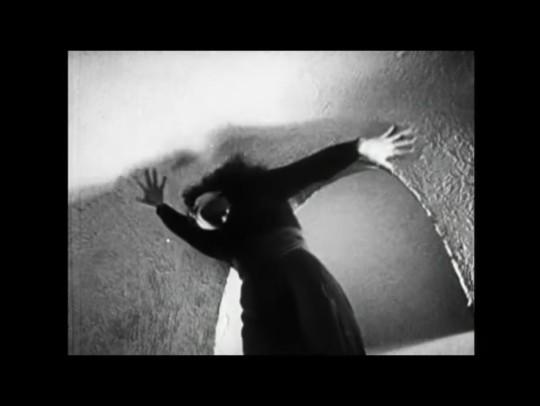

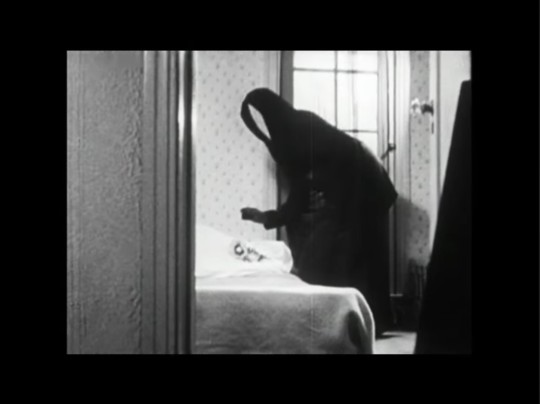









Meshes of the Afternoon
Maya Deren, 1943
#maya deren#short film#old hollywood#black and white#surreal#dream world#avant garde#cinema#surrealism#contemporary art#women filmmakers#eldrich horror#eerie#strange#dreamlike#meshes of the afternoon#classic film
303 notes
·
View notes
Text







At Land (1944)
[letterboxd | imdb | kanopy]
Director: Maya Deren
Cinematographers: Alexander Hammid, Hella Heyman
“In my case I have found it necessary, each time, to ignore any of my previous statements. After the first film was completed, when someone asked me to define the principle which it embodied, I answered that the function of film, like that of other art forms, was to create experience—in this case a semi-psychological reality. But the actual creation of the second film caused me to subsequently answer a similar question with an entirely different emphasis. This time, that reality must exploit the capacity of film to manipulate Time and Space. By the end of the third film, I had again shifted the emphasis—insisting this time on a filmically visual integrity, which would create a dramatic necessity of itself, rather than be dependent upon or derive from an underlying dramatic development. Now, on the basis of the fourth, I feel that all the other elements must be retained, but that special attention must be given to the creative possibilities of Time, and that the form as a whole should be ritualistic…”
— An Anagram of Ideas on Art, Form and Film by Maya Deren, The Alicat Book Shop Press, chapbook, 1946
#1940s#1944#Maya Deren#Alexander Hammid#experimental film#avant-garde film#cinema#cinematography#american film#film#my gifs#short film#independent film#women directors#female filmmakers#cinemaspam#filmblr#classic film#classic cinema#classic movies#silent film#silent movies
98 notes
·
View notes
Text

IM LOSING MY MIND
480 notes
·
View notes
Text




something stands between me and all the feelings I’m trying to dissect
maybe it’s melancholy made into flesh holding me down as a base to my wavering relationship with all that i am and all that i want.
an Imposter syndrome ?
maybe it’s all the goodbyes December held on a leash..
Impermanence scares us humans but so does stability
all the insecurities and self doubts wrapped around my neck with a gentleness that competes with a lover’s embrace.
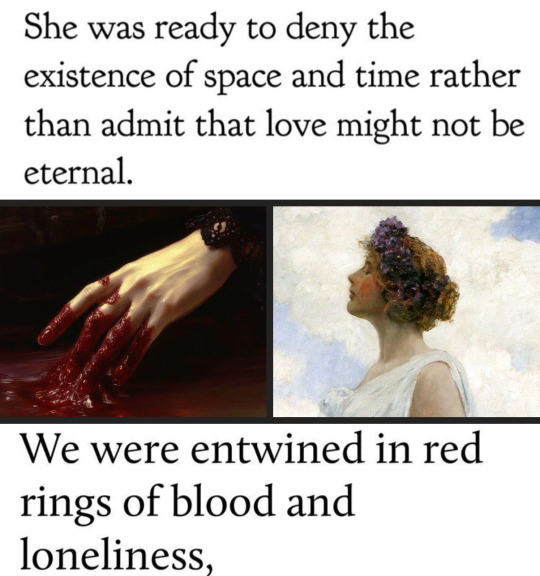
As the weather gets colder I burn through thoughts and distant dreams abandoned prospect
incandescent potential burnt to ash underneath my skin
And as i do so, i can’t help but wonder:
If I left you my letters as an offering will you put them together for me ?
Form endless strings of words and attach them to anything you deem familiar In me?
Wrap me up in poetry?
Or will you burn it the way i did my dreams; to warm yourself up ?
Will you prosper?


“Love” is nothing but a fabricated fairytale Sung by desperate heartbeats who have been poisoned by forfeited hope
Is the cup half full or half empty? I'm not sure anymore..
But the content of that cup is all that's left of my share of happiness in this world
and I'm willing to share it with you...
Even if it left me groundless.
Lost in the terminology of love, And the ideology of death and self sabotage
While disillusionment feed on my lifeline.
would it be so wrong to let myself dissolve in a little love knowing it won’t last?

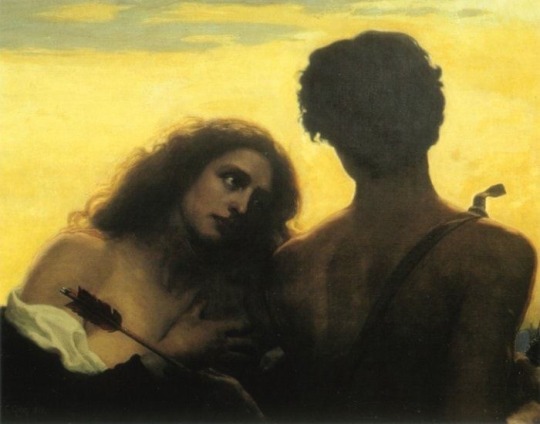

•••
• Quote: Sylvia plath/Mary Oliver/ Fyodor Dostoevsky/ Simone de Beauvoir/ Maya Angelou/ Marina Tsvetaeva/Anne Michaels
• Original context: Sinligh
• Art reference: 1. Art by Zhao Kailin. 2. Wounds of the Earth by xis.lanyx. 3. George Hitchcock, Calypso. 4.Art by Ivan Pokidyshev. 5. Monseigneur Love by Thomas Cooper Gotch
#original poetry#sinligh poem#on love#on longing#lost potential#quotes#sylvia plath#mary oliver#fyodor dostoevsky#marina tsvetaeva#simone de beauvoir#maya angelou#web weaving#word weaving#blotched words#compilation#art parallels#art compilation#art#classic literature#paintings#classic painting#poetry#writers on tumblr#feminine rage#love and death#self sabotage#imposter syndrome#dark academia#fuck the patriarchy
95 notes
·
View notes
Text


I wanna beat them ngl
#maya fey#maya ace attorney#phoenix wright#phoenix ace attorney#ace attorney#aa maya#aa phoenix wright#they’re like brother sister dynamic#this is not a ship#🙏#big brother#big brother moment#animal jam#animal jam classic#aj classic#ajc#phoenix and maya#probably gonna make lots more of them#they are very near and dear to my heart#katsuma#moshi monsters#mm katsuma
120 notes
·
View notes
Photo
tepat-side asked in DECEMBER:
The h in balahm - is it actually [h] or would it be a glottalized vowel?
I had to do some further research, because it's something I've struggled with.
Classic Maya might have had 4 different types of vowels:
V - a short vowel
VV - Vː, a long vowel
V', V'V -a vowel with a glottal stop. Sometimes the glottal stop breaks up the vowel, sometimes it doesn't and comes directly before the following consonant, or at the end of the word.
Vh - an aspirated vowel?
After reading about 15 articles, and 2 dozen descriptions of modern Maya languages, the best description I can find is from "A Grammatical Description of the Early Classic Maya Hieroglyphic Inscriptions", by Daniel A. Law, talking about 'h' being infixed into passive transitive roots:
Because of its proximity to the vowel nucleus, this infix has also been analyzed for Ch’olan languages as an aspirated quality on the vowel, rather than a separate phoneme (see Coon, 2004 for this analysis with Ch’ol).
But, Tepat, EVERYBODY ELSE is just saying it's an 'h' and moving on! And this is only about a specific verbal infix! I'm assuming it's also the same for other uses of 'h' as part of the vowel nucleus, but I DON'T KNOW. They won't tell me :( :(
-
Anyways, 'h' OUTSIDE of the vowel nucleus is a proper glottal fricative (/h/), which merged with 'j' (the velar fricative /x/) by the late (or even Middle?) classic period.
-
And they used to think that complex nuclei (VV, V', and Vh) were indicated by mismatched vowels in your root, for ex. writing 'Chahk' as 'cha-ki'. But now they've got all sorts of ideas about underspelled liquids ('cha-ki' being 'Chak-il') or 'i's marking present tense verbs ('cha-ki' being 'Chak-i'). Everybody is arguing and it's fun and confusing.
But I have no clue what that means for all the complex vowel nuclei. Very few, if any, modern Maya languages have a four way division like people reconstructed for Classic Maya. Did we overcomplicate things? Did they exist, but they weren't indicated in the spelling? Were these final vowels doing multiple things?
Come back in a decade, and we might know!
(Or maybe the article is already out, and I just haven't found it yet!)

The Tiger Poem in Classical Maya!
The Tiger He has destroyed his cage Yes Yes The tiger is out By Nael, Age 6
Literal translation:
he-destroyed his-captive-place the-jaguar yes-yes he-came.out the-jaguar his-writing master-Na'el man[of]-6-years
Transliteration:
ʔu-jomow ʔu-baaknal ʔu-balahm xt xt Joyoy ʔu-balahm ʔu-tz'ibaal Aj-Naʔel Aj-6-habiy
Character Transliteration (ALL CAPS are characters that stand for full words, lower case are syllabic):
ʔu-jo-mo-wa ʔu-ba-ki-NAL ʔu-BALAM-la-ma xa-ta-xa-ta jo-JOY-yi ʔu-BALAM-ma ʔu-tz'i-ba-li AJ-na-ʔe-le AJ-6-HAB-bi-ya
[Image shows the poem written in 2 columns of Maya glyph blocks. A diagram shows the reading order (which is complex). All the posts text is also included on the image.
End ID.]
#classic maya#historical linguistics#gecko writes pretty#maya#PLEASE actual historical linguists#explain the 'h' to me!#I am struggling!
24K notes
·
View notes
Text
Yuri (1970s)

edit: I am sorry for mistake Claudine for yuri series, I collected old school manga in a hurry without checking them carefully, thank you for noticing me, or the wrong information will keep misguide others.
#yuri#百合#1970s#classic yuri#old school#Shiroi Heya no Futari#Futari Pocchi#Kurenai ni Moyu#Maya no Souretsu#70s
65 notes
·
View notes
Text

Maya as the Mona Lisa
#digital art#digital painting#painting#art#artist#mona lisa#maya borderlands fanart#borderlands 2#borderlands#borderlands 3#maya the siren#maya borderlands#borderlands maya#borderlands fan art#borderlands fanart#classical painting redraw
419 notes
·
View notes
Text

- Maya Angelou
#maya angelou#fyp#tumblr fyp#moonkissedletters#poetry on tumblr#dark academia#light academia#litrature#dark acadamia quotes#fypシ#classic literature#literature quotes#light acadamia aesthetic#english literature#literary quotes#lit#tumblr#tumblr milestone#fypツ#fypage#for you#spilled ink#self love#dark acadamia aesthetic#dark academia quotes#poems and quotes
28 notes
·
View notes
Text

I miss Nickelodeon's "Japanimation" era.
#nick planted the seed#sailor moon made it grow#my start of darkness before i even realized it#the mysterious cities of gold#noozles#grimm's fairy tale classics#the adventures of the little koala#maple town#belle and sebastian#the littl’ bits#maya the bee#classic nickelodeon#80s nickelodeon#80s anime#showa era
77 notes
·
View notes